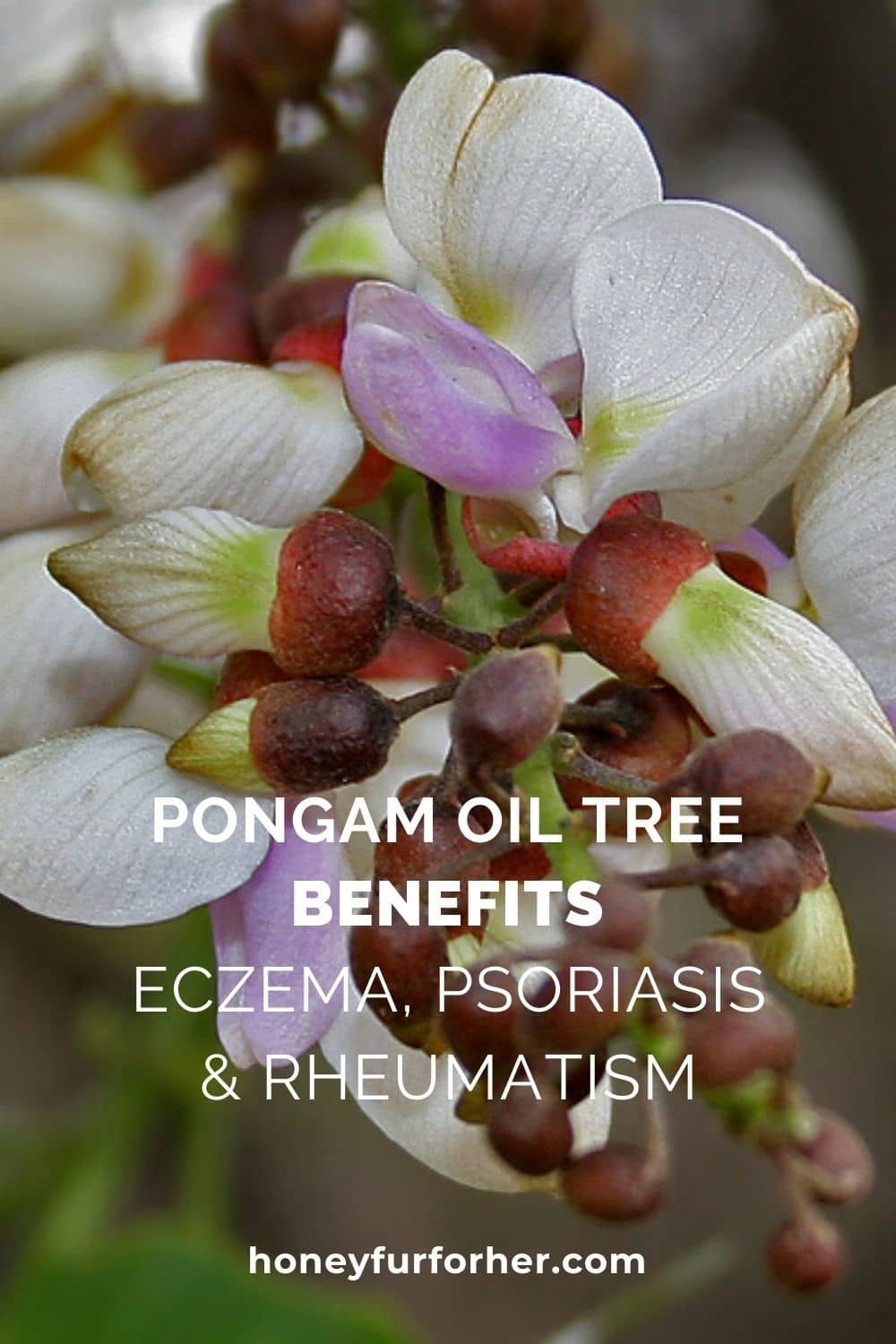What is Karanja Oil & Its Properties
Karanja Oil is an oil extracted from the seeds of the fruit of Karanja / Indian Beech plant (Pongamia pinnate) or Pongam Oil Tree. Karanja is also known as Naktamala in Sanskrit. It is a drought-resistant, semi-deciduous & nitrogen-fixing leguminous tree found in temperate parts of Asia including India, China, Malaysia, Japan and Australia.
Karanja oil extraction from the seeds is done by cold press method in a mechanical expeller and it is considered non-edible due to its bitter taste and unpleasant smell. It is mainly used in Ayurveda for the treatment of skin diseases and rheumatism.
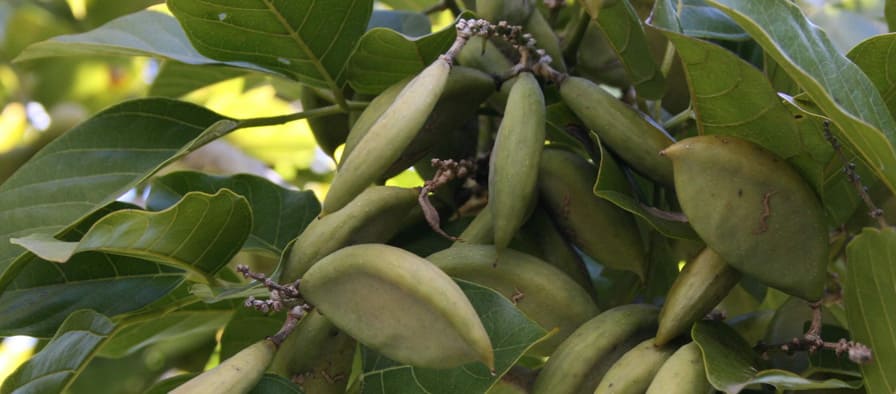
Properties Of Karanja Oil
- Kandughna Gana – Relieving Itching sensation
- Kushtaghna – Relieves Skin Diseases
- Ropana – Healing Property
- Anthelmintic – Expels Worms and Parasites
- Alexipharmic – Works against poison
- Useful in Eye Diseases
- Useful in Vaginal Diseases
- Styptic (Stops bleeding of wounds)
- Antifungal
- Antibacterial
Medicinal Uses & Benefits
Karanja Oil For Skin Problems
In Charka Samhita Sutrasthana Chapter 3, Aragvedheeya Adhyay, Acharaya Charaka explains in great detail about skin diseases and how to deal with them using oils, ointments using 32 different types of Ayurvedic preparations. It has a mention of Karanja seeds combined with other herbs as an excellent remedy for skin problems.
करञ्जबीजैडगजं सकुष्ठं गोमूत्रवपष्ं च परः प्रदेहः||१३||
This means that the Seeds of Karanja (Pongamia pinnata), Kushta (Saussurea lappa), Edagaja (Cassia tora) pounded with cow’s urine constitute an ointment which is excellence for skin diseases.
Eczema, Psoriasis, Acne & Fungal Infections
The oil preparation of Karanja is very beneficial for problems like eczema, psoriasis, herpes, leucoderma/vitiligo, rosacea, boils, acne and fungal infections especially Pityriasis Versicolor & ringworm. The juice of the plant as well as the oil have antiseptic properties and haemostatic (clotting the blood) effect and can heal wounds and abscesses quickly by when applied in combination with other oils like coconut oil. It is also seen to be effective in enhancing the pigmentation of skin affected by leucoderma or scabies.
Not only the oil but the fruits of Karanja tree are also effective in treating skin infections and psoriasis.

Acharya charka defines an ointment preparation made from mixing Aragvadha, Karanja, Vasa, Guduchi, Madanaphala, Harida, and Daruharida, which on the application can cure obstinate skin diseases like ringworm, fistula-in-ano, piles, cervical adenitis, leucoderma and leprosy. This is a difficult preparation and cannot be used for self-medication but mentioned here just for knowledge sake.
Acharya Sushruta gave Karanja seed oil as a laxative, for intestinal parasites and cutaneous affections.
How To Use For Skin Diseases?
Suggested Home Remedy: Mix equal quantities of coconut oil with Karanja oil and mildly heat it. Apply on the affected area with a cotton swab trice a day for 2 weeks. If you don’t want to mix other oils, you can apply it directly as well.
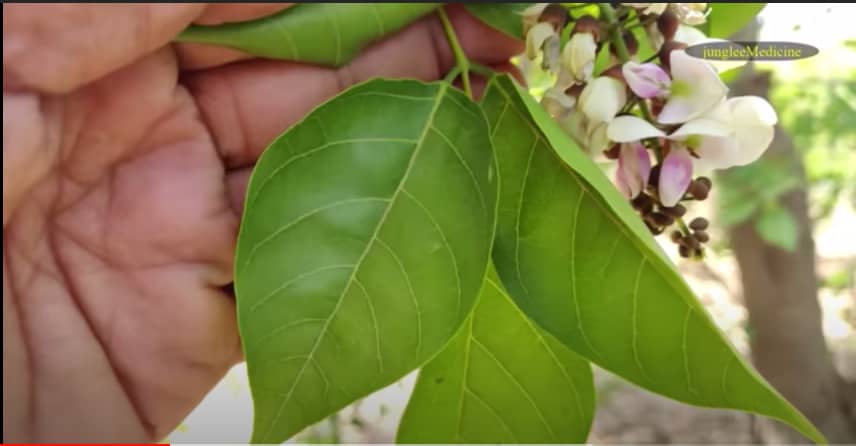
Karanja Oil For Hair Problems & Growth
Acharya Sushruta classically used to prescribe karanj oil as one of the main ingredients in oil preparations for alopecia and baldness specifically. [1]
The high content of Oleic acid in the oil prevents water loss from the hair making them soft and pliable. It is also known to protect hair from damage and colour fading due to sun exposure. This is due to Pongamol and karanjin components in the oil, which display UV A and UV B sunscreen activity.[3] It also protects from scalp related problems like eczema, itching and dandruff.
Following is the fatty acid profile of karanj oil
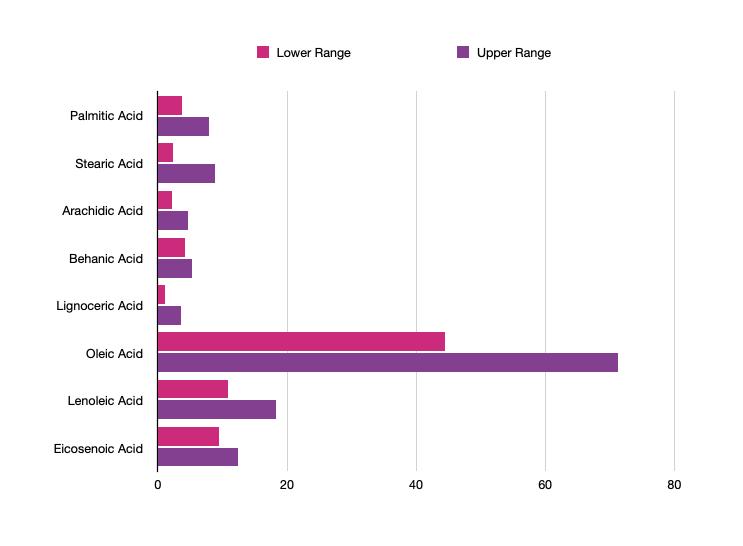
How to use for hair problems?
Take pure karanj oil and mix 3 to 5 drops in coconut oil or olive oil. Apply before hair wash once a week for two months for itchy scalp and dandruff.
You can also mix karanj oil with neem oil and apply once a week.
Rheumatism: Joint Pain
In the modern world as well as in folk medicine, Karanja Oil is considered highly useful for treating rheumatic arthritis and joint pain due to Its anti-inflammatory properties.
Bathing in karanj plant leaf is also great for day to day management of arthritic pain and inflammation.
Apart from these major benefits, the oil has also seen use in treating tumours, wounds, ulcers, enlargement of spleen and abdomen, urinary discharges, biliousness, piles and head pains.
How to use for Joint Pain?
Mix 3 to 5 drops of Karanja oil with little sesame oil. Apply thoroughly over painful area and massage well.
Non-Medicinal Uses
#1. Karanja Oil Uses In Agriculture As A Pesticide
One of the main uses of this semi yellowish-brown oil is in the agricultural field, as a potent pesticide. The alkaloid present in the oil shows antifeedancy in adult and nymphs of mites, thrips, jassids and whiteflies. It controls all varieties of mites. Karanjin is the main active component which acts as an acaricide and insecticide and also contains nitrification inhibitory properties.
The fresh cake (the remnants after oil pressing) is also effective particularly against pesticides called nematodes. The dried leaves if kept in grain stores also repels insects.
#2. As A Fuel
Karanj oil has been used in India from ancient times, as a fuel for cooking and lamps. In recent times, it is also used as promising biodiesel which is safe, renewable and non-pollutant.
Here is a table showing the comparison of Karanja Biodiesel and Diesel. (Read the study for detail)
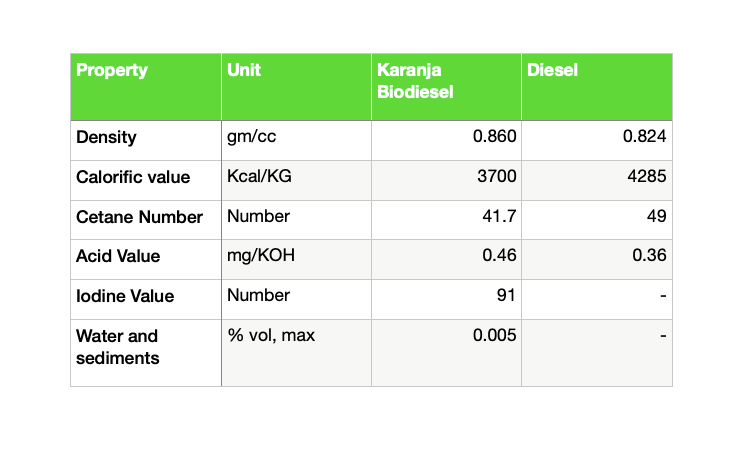
#3. Other Uses
Other common uses include its use in soap and candles making. It is also used widely for leather dressing in tanning industries, manufacture of varnish, paints and Ayurvedic medicines. It is also as a lubricant and a water paint binder[2].
Possible Side Effects
Karanja Oil is hot in potency so it should be used in very little quantity if you are suffering from pitta disorders or gastritis and acidity.
The use of this oil is not recommended in pregnancy and lactation without the consultation of an Ayurvedic physician.
Buying Availability & Price
Kazima karanj Seed Cold-Pressed Oil – 30 ml – Rs. 339
Devinez Karanj Seed Oil – 250ml – Rs. 1,027
Naturalis Essence of Nature Extra Virgin Unrefined Cold Pressed Karanj Seed Oil – 250ml – Rs. 394.00
Reference
- Encyclopedia of Indian Medicinal Plants: Rational Western Therapy, Ayurvedic, and Other Traditional Usage, Botany
- https://www.researchgate.net/publication/237939995_Pongamia_pinnata_Phytochemical_constituents_traditional_uses_and_pharmacological_properties_A_review
- https://www.researchgate.net/publication/233317535_Determination_of_Pongamol_and_Karanjin_in_Karanja_Oil_By_Reverse_Phase_Hplc
Did you find this post useful? Would you like to get back to it later? Save THIS PIN below to your Pinterest Natural Living or Ayurveda board!
